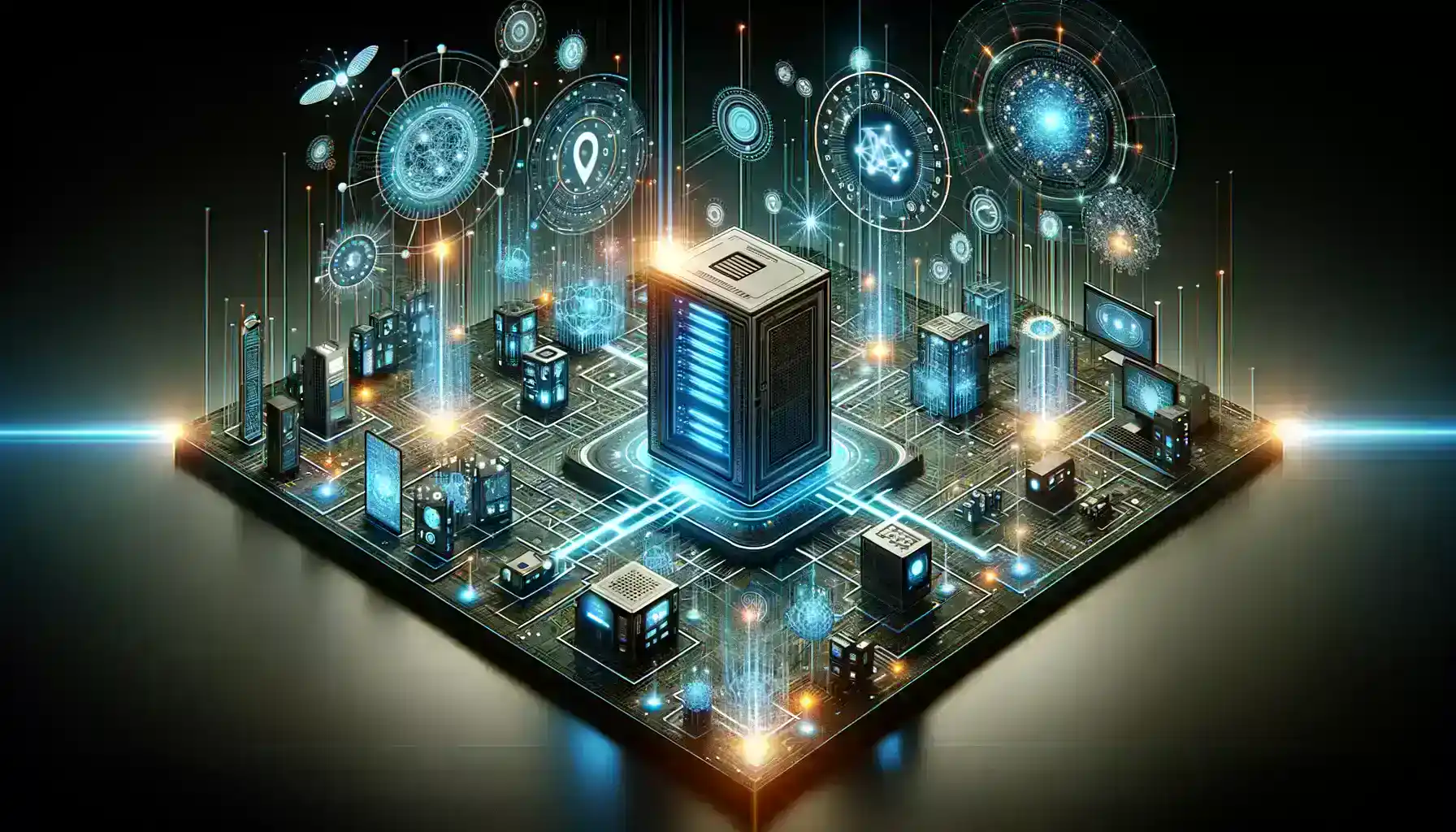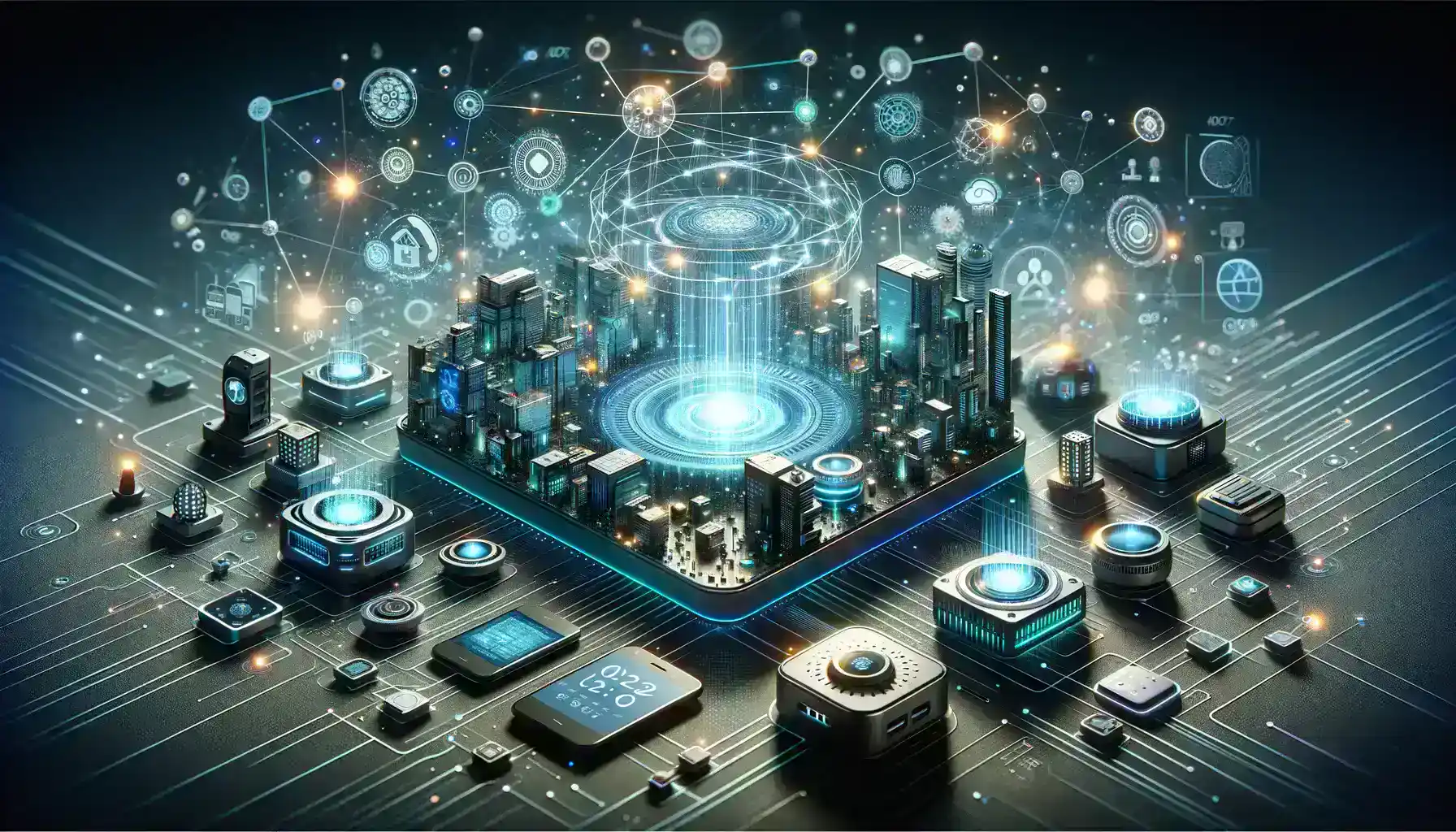Table of Contents
In the fast-evolving landscape of the Internet of Things (IoT), the concept of edge computing has emerged as a pivotal technological advancement. Edge Analytics, in essence, refers to the practice of processing data closer to its source or “at the edge” of the network, as opposed to relying solely on centralized cloud servers. This paradigm shift has brought about a fundamental change in the way IoT devices and systems operate.
The significance of a robust architecture cannot be overstated when it comes to IoT deployments. As IoT continues to permeate various sectors, from smart homes and healthcare to industrial automation and transportation, the need for reliable, efficient, and secure data processing at the edge becomes increasingly critical. A well-designed Edge Analytics architecture not only ensures minimal latency but also optimizes bandwidth usage and enhances data privacy and security.
1. Understanding Edge Computing
Edge computing is a pivotal concept in the realm of the Internet of Things (IoT), playing a crucial role in transforming how data is processed and utilized in modern digital environments.
At its core, Edge Analytics is an architectural approach that involves processing data closer to its source, i.e., at the “edge” of the network, as opposed to relying solely on centralized cloud servers.

In edge computing, computing resources are distributed across various devices and nodes within the network, allowing data to be processed in proximity to where it’s generated. This proximity is one of the defining features of Edge Analytics.
Edge Analytics is a transformative approach that brings data processing closer to where it’s generated, offering numerous advantages over traditional cloud computing, particularly in IoT applications requiring low latency, efficient bandwidth usage, enhanced security, and real-time decision-making.
2. Key Elements for a Robust Foundation for IoT
In the realm of IoT, a robust foundation is essential to ensure the efficiency, reliability, and security of data processing and communication. Here, we delve into the five critical elements that form the bedrock of a strong IoT architecture, with a special emphasis on the role of edge computing.
- Edge Devices: Edge devices are the IoT endpoints where data is collected, usually at the source. These devices include sensors, actuators, cameras, and more. Their primary function is to gather real-time data from the physical world.
- Edge Servers: Edge servers act as intermediaries between edge devices and the cloud or data center. They are responsible for processing, aggregating, and storing data locally. By doing so, they alleviate the burden on central cloud servers, reduce data transfer costs, and minimize latency.
- Edge Gateways: Edge gateways serve as a bridge between edge devices and the wider network, enabling communication and data exchange. They perform protocol translation, data filtering, and security functions.
- Data Processing and Analytics: Data processing and analytics are at the heart of Edge Analytics. By performing computations at the edge, near the data source, organizations can gain immediate insights and take real-time actions.
- Security Measures: Security is a paramount concern in IoT, and Edge Analytics plays a crucial role in enhancing data security. Edge devices, servers, and gateways can implement security measures such as encryption, access control, and intrusion detection at the edge. This protects sensitive data from being exposed during transmission to the cloud.

3. Architectural Considerations
In the realm of edge computing, making informed architectural decisions is crucial to ensure the efficiency, reliability, and performance of IoT deployments. There are several key considerations to keep in mind when designing an Edge Analytics architecture.
- It offers a spectrum of architectural approaches to choose from, each catering to specific use cases and requirements. These approaches can be broadly categorized into centralized and decentralized architectures.
- In a centralized edge architecture, data processing and analysis primarily occur at a central data center or cloud location, which is often referred to as the ‘hub.’ Edge devices collect data and transmit it to the hub for processing.
- Decentralized edge architectures distribute data processing and analytics closer to the edge devices themselves. This approach minimizes latency and enhances real-time capabilities.
- Scalability and flexibility are critical considerations when choosing a computing architecture for data center projects. Centralized architectures can be easier to manage and scale horizontally, but they may encounter bottlenecks as the number of edge devices grows.
- Many organizations opt for hybrid Edge Analytics architectures that combine elements of both centralized and decentralized approaches. This hybrid model allows for flexibility and customization, enabling organizations to balance latency, scalability, and centralized control based on specific IoT use cases.
4. Challenges and Solutions
Implementing edge computing for IoT comes with its set of challenges that organizations need to navigate effectively.
- Latency Management: One of the primary challenges is managing latency when processing data at the edge. IoT applications often require real-time or near-real-time responses, making latency reduction crucial.
- Scalability: As IoT networks expand, scaling the edge of the infrastructure becomes complex. Ensuring that edge devices and servers can handle increased workloads is a challenge.
- Data Security: Edge devices are vulnerable to physical attacks and need robust security measures. Securing data at the edge is critical to prevent unauthorized access or data breaches.
- Data Management: Managing the vast amount of data generated by IoT devices at the edge can be overwhelming. Efficient data storage, retrieval, and analysis are key challenges.
- Interoperability: IoT ecosystems often involve a mix of devices from various manufacturers. Ensuring that these devices can communicate and work seamlessly within an edge architecture is a challenge.
Practical Solutions and Best Practices:
To address these challenges and build a foundation for IoT, consider the following practical solutions and best practices.
- Edge Caching: Implement edge caching to reduce latency by storing frequently accessed data locally on edge servers.
- Load Balancing: Use load balancing techniques to distribute workloads evenly across edge servers, ensuring scalability.
- Encryption and Access Control: Employ strong encryption and access control mechanisms to protect data at the edge. Use hardware-based security features when available.
- Edge Data Analytics: Leverage edge data analytics to process data closer to the source, reducing the volume of data transmitted to the cloud and easing data management.
- Standardization: Embrace industry standards and protocols to ensure interoperability between devices and systems in your Edge Analytics architecture.

Planning and Preparation:
The importance of planning and preparation cannot be overstated when implementing Edge Analytics for IoT.
- Comprehensive Strategy: Develop a comprehensive Edge Analytics strategy that aligns with your organization’s goals and IoT requirements.
- Risk Assessment: Conduct a thorough risk assessment to identify potential security vulnerabilities and plan accordingly.
- Testing and Simulation: Test your Edge Analytics architecture in a controlled environment to uncover potential issues and fine-tune your setup.
- Continuous Monitoring: Implement continuous monitoring and maintenance procedures to keep your edge infrastructure up-to-date and secure.
5. Real World Applications
In the realm of IoT, the impact of a robust edge computing architecture is most evident in its real-world applications across various industries. Here, we’ll delve into some tangible examples that highlight the profound difference edge computing can make, particularly in sectors such as healthcare, manufacturing, and transportation.
- Healthcare: It plays a pivotal role in revolutionizing healthcare by enabling faster data processing and real-time decision-making. In hospitals, wearable medical devices and remote patient monitoring systems generate vast amounts of data. With an edge computing infrastructure in place, this data can be processed locally, allowing healthcare professionals to receive critical patient information promptly.
- Manufacturing: Manufacturing processes benefit significantly from Edge Analytics due to its ability to reduce latency and improve operational efficiency. In smart factories, sensors and cameras embedded in machines collect data on equipment performance, product quality, and safety parameters.
- Transportation: It is a game-changer in the transportation sector, particularly in the context of autonomous vehicles and smart traffic management. Self-driving cars rely on edge computing for real-time data processing, enabling them to make split-second decisions without depending solely on a remote data center.

Conclusion
In the rapidly evolving landscape of technology, Edge Analytics continues to be a focal point of innovation and transformation. As we look ahead, several key trends are shaping the future of edge computing and its integration with the Internet of Things (IoT).
One prominent trend is the growing demand for real-time data processing and analytics at the edge. As IoT devices become increasingly sophisticated, the need for immediate insights and responses is paramount. Edge Analytics enables data to be processed locally, reducing latency and ensuring swift decision-making.
Another emerging trend is the convergence of Edge Analytics with AI and machine learning. By deploying machine learning models at the edge, IoT devices can make more intelligent and context-aware decisions without relying on constant connectivity to centralized servers. This paves the way for more autonomous and efficient IoT systems.
The future of IoT is closely intertwined with the development and adoption of edge computing. A robust edge computing architecture is the linchpin that enables IoT devices to operate efficiently, securely, and responsively. As the world becomes increasingly connected and data-driven, the critical role of edge computing in shaping the future of IoT cannot be overstated. Embracing these trends and building a solid foundation in Edge Analytics is essential for organizations looking to thrive in the IoT era and beyond.